No one can underestimate the significance of Small Form-factor Pluggable (SFP) modules in the current network infrastructure. These components facilitate the smooth transmission of data within different network designs. MikroTik is a well-known networking company that provides an array of SFP modules meant to cater to various networking demands. This manual discusses the MikroTik SFP module’s performance, compatibility, and other features that give a clear comprehension to network admins, IT experts, and enthusiasts. If you intend to improve your network or fix connectivity problems, this piece is designed to provide you with all the information needed for decision-making.
What is a MikroTik SFP Module?
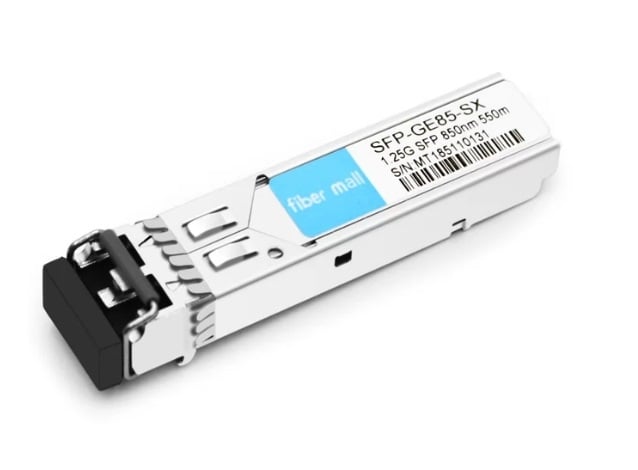
Overview of MikroTik SFP Products
MikroTik provides a range of SFP modules that can satisfy various network needs. These comprise SFP and SFP+ modules designed to support different speeds and protocols in different capacities. Typically, SFP modules can support data rates up to 1.25 Gbps, which is fit for both single-mode and multi-mode fiber cables, while SFP+ modules can handle data rates of up to 10 Gbps, thus making them best suited for high bandwidth applications. What sets apart MikroTik’s SFP modules from others is their wide compatibility with many network devices so they can easily be integrated into any system environment without affecting performance negatively.
Main Features of MikroTik SFP Modules
Various characteristics of MikroTik SFP modules distinguish them from other brands and make them more effective. They have a wide compatibility range, meaning they can work well with many networking devices. Therefore, this feature becomes very important if an administrator wants to incorporate new modules into the current system without necessarily replacing everything else. Additionally, MikroTik SFPs support single-mode fiber cables (SMF) and multimode fibers (MMF), giving them flexibility in different network setups. This module also meets industry standards while ensuring better performance and interoperability. For instance, their data transfer rate is up to 1.25Gbps for SFP and even 10Gbps for SFP+ for standard and high-bandwidth needs, respectively. Furthermore, these items can be replaced without shutting down anything because they are hot-swappable, hence easy to install or maintain, thus reducing downtime significantly. In summary, all these features make any optical or copper-based module produced by Mikrotiks reliable enough to build strong networks that will last long without experiencing frequent failures or breakages.
Types of SFP Modules Available
MikroTik proposes extensive SFP modules to cater to different networking needs. The main types are as follows:
- SFP Modules: Created to handle data rates of up to 1.25 Gbps, these modules can work with both single-mode and multi-mode fiber cables, ensuring the best performance.
- SFP+ Modules: They support data rates of up to 10 Gbps, making them ideal for high-bandwidth applications requiring single-mode or multi-mode fibers.
- SFP28 Modules: These modules can handle 25 Gbps data rates and are, therefore, suitable for use in data centers and other high-speed network environments.
- QSFP+ Modules: These can accommodate data rates of up to 40 Gbps, making them perfect for aggregated high-speed backbones and data-intensive networks.
- QSFP28 Modules: These modules can support up to 100Gbps bandwidth, making them ideal for state-of-the-art network infrastructures where maximum speed is required.
All these devices boast excellent performance levels; they also have many uses due to their flexible nature, and they are easily integrated into MikroTik or any other networking equipment.
How to Install and Configure a MikroTik SFP Module
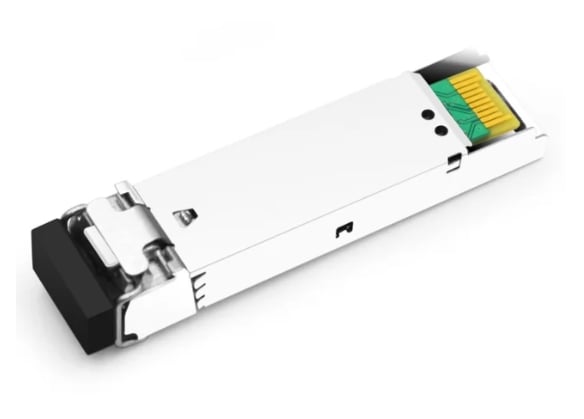
Step-by-Step Installation Guide
Step 1: Planning
See to it that the SFP module is correct and the fiber optic cable is compatible with the network you are working on, for example, MikroTik 1.25G SFP. If necessary, shut down your device or network switch before installing the module because some power surge problems can destroy electronic components.
Step 2: Inserting the SFP Module
Take off the dust caps from both sides of an optical transceiver (SFP module) as well as its slot in a router board or switchboard, then align this small gadget with the respective port before gently pushing it inside until it clicks firmly into place though sometimes one may use optical sfp instead if at all he/she wants faster data transfer rates but remember to apply moderate pressure so that everything should fit together tightly without damaging anything else around there.
Step 3: Connection of Fiber Optic Cable
Remove protective covers from LC connectors located at the ends of fiber patch lead cables. Then, insert these connectors into the duplex connector interface provided on the front side of the SFP module until they are locked safely. This ensures that transmit/receive pairs are properly aligned, hence preventing any connectivity problem from arising later on during communication between different devices interconnected by means of this link.
Step 4: Power On Device
Power up a device or network switch where you have installed this new media converter kit. When powered, it will detect the presence of inserted optic transceivers immediately after the booting process. So check the status of LEDs situated next to each ethernet port connected directly with corresponding optical ports to determine whether they indicate successful connection establishment between two such nodes or not. Thus, you can assure yourself that everything went as expected while making physical connections.
Step 5: Configuring Network Settings
An access management interface is offered by the given device to configure various aspects concerning networking parameters required for linking up different machines within the LAN/WAN environment whose topological design has been implemented using these particular hardware elements supplied by Mikrotik company limited. This is usually accomplished through a web browser by typing the device’s IP address into the URL and then logging in using your username and password.
Step 6: Checking Installation
Perform several tests upon completion of the setup process just to make sure that everything works fine and that no errors are encountered during this exercise. Use appropriate network diagnostic tools, such as ping or traceroute command-line utilities, to verify connectivity, data transmission rates, and overall performance exhibited by the link established between two hosts connected through newly installed media converter modules.
Through these steps, you will be able to install and configure the MikroTik SFP module correctly without experiencing any challenges that may affect the normal operation of your network.
Configuring the SFP Port on the MikroTik Router
To set up the MikroTik router’s SFP port, implement the following steps:
- Access the Router Interface: Open a web browser and type the router’s IP address in the address bar. Log in using your credentials to access the RouterOS web interface.
- Go to Interfaces: Click the “Interfaces” tab after logging in. All available interfaces will be displayed here including the SFP port.
- Enable SFP Port: Choose an SFP port from the list provided. Ensure that it is enabled by ticking the ‘Enabled’ check box; otherwise, this port will not work properly.
- Assign a Name: It is recommended that you name an SFP port for easy identification purposes. To do so, double-click on an interface and enter a unique name in the “Name” field.
- Configure IP Settings: Allocate an IP address for the SFP interface. Go to the “IP” tab, then select “Addresses.” Click on the “+” button to add a new address. Key in the required IP address along with the subnet mask, and assign it to the selected SFP interface.
- Set Up VLANs (Optional): If you are using VLANs in your network infrastructure, they can also be configured for this particular SFP port. Navigate through the “Bridge” or “Switch” menu, create new VLANs, and map them accordingly against the SFP interface.
- Test Connectivity: Once everything has been configured, ping across MikroTik devices through compatible transceiver modules plugged into respective fiber optic cables linked with each other at different ends of these devices, such as routers or switches, etc. Use ping or the Traceroute tool to verify the network connection between them and make sure there are no interruptions during this process.
By following these steps, you will ensure that your MikroTik router’s sfp port is configured correctly into your network topology, thus enhancing its performance and reliability.
Common Installation Issues and Fixes
That’s not an SFP port
- Issue: When set up, the router fails to recognize this as an SFP port.
- Fix: Make sure the SFP module is inserted correctly into the port and is compatible with the router. Sometimes, updating RouterOS firmware can help with recognition problems.
Missing link light on SFP port
- Issue: There is no link light on the SFP port, which means no connection has been established between devices.
- Fix: Ensure both ends of the fiber optic cable are firmly attached. Check if the cable itself was damaged physically. A faulty sfp module might cause this – try using a different one instead.
Off-and-on connectivity
- Issue: The network starts going in and out through an intermittent connection over sfp ports, which results in various networking issues experienced by users connected to such network segments.
- Fix: If used, re-check VLAN settings for possible misconfiguration within your current setup, as this can also cause trouble. Make sure all cables are of good quality and meet necessary network specifications. Run diagnostics or use network monitoring tools to find out more about what causes these instabilities, among other things.
These solutions should resolve most common problems related to small form-factor pluggable transceiver modules used on routers or switches, enabling stable communication channels across computer networks.
Compatibility of MikroTik SFP Modules
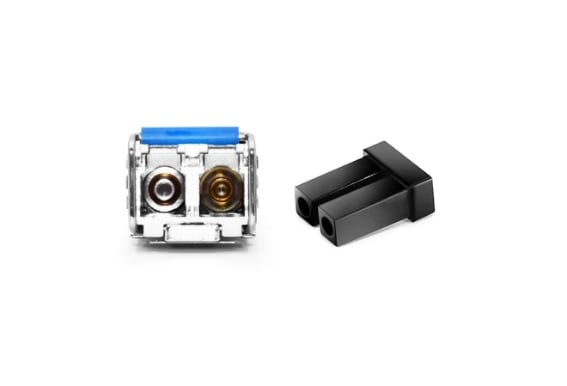
Checking Compatibility with Existing Hardware
Here are a few important elements to consider when examining the compatibility of MikroTik SFP modules with your current hardware:
- Compatibility between modules and routers: Ensure the SFP module is listed as compatible with your particular MikroTik router model. This data can usually be found on the company’s website or user manual.
- Firmware requirements: Just check whether your router has the latest firmware version installed. Doing so may provide additional compatibility and performance improvements through updates like bug fixes or support for more types of SFPs, which Mikrotik frequently does to address compatibility problems, among other things.
- Port specifications: Ensure that both data rates (bps) and wavelengths (nm) are matched correctly between an ethernet port and any connected Sfp transceiver module; otherwise, these mismatched parameter configurations can make it impossible for them to recognize each other, let alone establish a connection.
- Third-party modules: If you have bought third-party optics, they must adhere to industry standards and undergo tests against MikroTik appliances. Some such modules might fail due to proprietary limitations in their firmware or hardware design.
All sfp should seamlessly work with existing Mikrotik, maintaining optimal network stability while ensuring maximal performance levels.
MikroTik SFP Compatibility
To make MikroTik SFP modules work well with your equipment, you can do the following:
- Look at the MikroTik Compatibility List: Review the official compatibility list of MikroTik for your router model and determine the supported SFP modules.
- Update Firmware: Ensure that you have installed the latest router OS version provided by Mikrotik, as they sometimes release new versions that support new types of optical SFPs, among other things.
- Match Specifications: Verify whether or not the data rate/wavelength specifications of an SFP transceiver coincide with those required by its port on a given router.
- Evaluate third-party devices: If using third-party optic modules, check if they comply with the necessary standards and have been tested for compatibility with microtasks.
Doing this maximizes compatibility and performance between SFPs and other devices running on MikroTik systems.
Using SFP Transceivers from Different Brands
While using SFP transceivers from different brands, one should consider compatibility and performance as the main aspects. Here are some of the things you need to know:
- Compliance with Standards: Ensure third-party SFP transceivers meet relevant standards such as IEEE 802.3 and MSA (Multi-Source Agreement) so they work well across various manufacturers and devices.
- Firmware Compatibility: The firmware used in your hardware must be able to support that of a third party’s SFPs; otherwise, they will not be recognized by each other; this can lead to low efficiency or even breakdown of network equipment. You can refer to MikroTik’s compatibility table so as not to have any problems with it.
- Vendor Support: You need to find out if the people who made your equipment acknowledge these other types, too. Some sellers may provide their customers with lists showing what works best together, while others may just say something like, “Use only our approved ones.”
- Testing Performance: Ensure that all necessary tests are done to determine how well these additions perform against set standards because failure may result in a delay in communication or even the complete shutdown of links due to poor error detection methods being implemented.
- Warranty Consideration: It is important to note that using non-approved third-party SFPs can cause warranty voidance on associated gadgets. Thus, always read through the terms carefully before making any decision.
Following these recommendations will enable you to integrate different branded sfp transceivers into your network without compromising reliability and performance.
What are the Benefits of Using MikroTik SFP Modules?
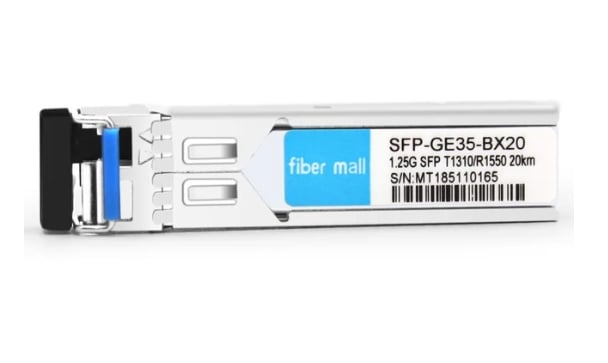
Enhanced Network Performance
The utilization of MikroTik SFP modules can increase network performance greatly with the provision of fast data transfer and low delays. This particular module are made to work well with MikroTik devices, thereby ensuring maximum compatibility as well as reliability. Besides this, they have strong error detection capabilities coupled with error correction mechanisms that enhance integrity within networks while minimizing downtime, too. With their support for many different rates of data transmission over different distances, these SFPs offer the flexibility necessary for efficient scaling up network infrastructure by a significant factor.
Flexibility of Deployment
The SFP modules produced by MikroTik are unmatched in terms of deployment adaptability, thereby being ideal for a variety of network settings. These components have hot-swappable capabilities to allow replacement or upgrading without causing downtime for the whole system. Moreover, they can work with different types of cables, such as optical fibers and copper wire, making it easy to integrate them into already existing networks. Additionally, data rates supported range from 1Gbps up to 10 Gbps while operating at various distances, thus enabling scalability in relation to changing demands on networks. This means that organizations can expand their infrastructures quickly and modify them as needed so as to meet modern networking requirements.
Cost Efficiency and Savings
MikroTik SFP modules are designed to be cost-effective. They provide network products that minimize CAPEX and OPEX. These modules allow the network infrastructure to be used multiple times instead of rebuilding it at a high cost. This is because they can work with various cable types, such as fiber and copper, which reduces installation expenses too. Moreover, their great reliability leads to fewer breakdowns, thus cutting down on maintenance hours needed and operational costs incurred during downtimes. MikroTik SFP modules are compliant with industry standards while being priced competitively, thereby offering cheapness without compromising on quality or performance, hence ideal for budget-minded network managers.
Customer Reviews and Experiences
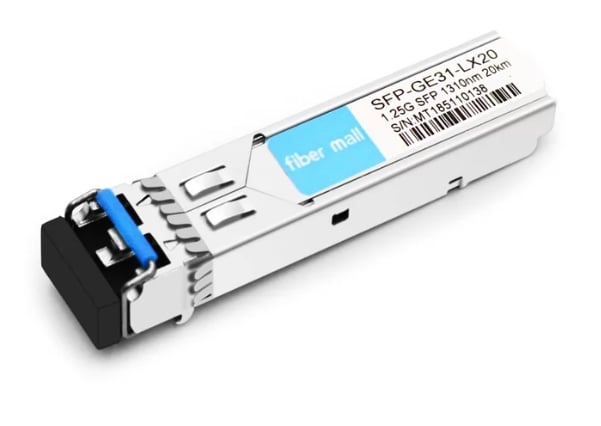
Positive Feedback from Users
Many users are happy with the MikroTik SFP modules because of their performance and reliability. One thing that most people talk about in their reviews is how easily this module integrates into existing network infrastructures. Since they are compatible, they can work with different networks and devices. Also, these transceiver modules are easy to install and hot-swappable, reducing network downtime and minimizing maintenance.
Another aspect of these modules that has received positive user feedback is cost-effectiveness. People love that it offers affordable prices without compromising on quality, making it suitable for small-scale projects up to large-scale enterprise ventures. Many users have also praised their durability, which translated into longer operational life spans, thus saving them for replacements or repairs.
Moreover, the versatility in terms of data rates and distances supported by MikroTik SFP modules has been highly appreciated as it allows for scalable future-proofing solutions within networks where growth may be anticipated over time without requiring significant additional investments on the part of administrators managing such systems, hence further enhancing overall satisfaction levels with regard to product offerings made available by this company.
Common Complaints and Criticisms
Mikrotik SFP modules have numerous benefits, but they also come with common complaints and criticisms. One common issue is that these modules may not be compatible with other brands’ devices from time to time, as some users have reported. This can cause network interruptions and more troubleshooting in mixed-brand environments where people have tried using them.
The second concern is about MikroTik’s technical support and documentation; a few individuals say the resources are good enough, while others say the manuals lack detail and customer care takes too long to respond, which could prolong problem-solving.
Finally, initial firmware versions for some specific Mikrotiks SFP modules may contain bugs observed by certain users who, therefore, recommend immediate deployment updates for such devices. This may take longer than expected, especially when integrating them into larger infrastructure setups since it creates additional workloads and saves time if one checks the compatibility table.
That being said, people love these modules because they are cheap and perform well. However, potential buyers should know these things so that their systems don’t experience much downtime.
Expert Reviews and Opinions
Expert reviewers have always appreciated MikroTik SFP modules for their balance between performance and affordability, which recognizes the brand’s reputation in networking.
- TechRadar: TechRadar notes that these are seen as some of the best-performing optics in high-traffic environments like data centers or enterprise networks, where they must handle huge amounts of data continuously without failing once. Experts praise them for being reliable enough to work well even under heavy loads.
- PCMag: PCMag points out that MikroTik offers features that compete with those found on more expensive devices from companies such as Cisco or Juniper but cost only a fraction of as much. They note some cases where it may not play nicely with other equipment due to compatibility issues but say this is still an excellent choice when budget counts most over performance.
- Network World: Network World highlights how innovative MikroTik has been regarding SFPs and consistency in terms of performance but warns against firmware updates and compatibility checks that should be done before using them. The user documentation has improved over the years, according to experts from Network World, who still want more.
Ultimately, industry reviews seem to agree that MikroTik SFPs offer great value while still delivering good speed—but sometimes at the expense of playing well with others. So, if you’re considering mixing brands, proceed carefully!
Reference Sources
Frequently Asked Questions (FAQs)
Q: What are MikroTik SFP modules?
A: MikroTik SFP modules are small-form-factor pluggable transceivers used to achieve high-speed data links in networking devices such as switches and routers. They can work with different protocols and media types, including fiber and copper connections.
Q: Are 25G SFP28 compatible with MikroTik SFP modules?
A: Yes, MikroTik provides 25G SFP28 modules that support the requirements of devices needing such specifications. However, it is essential to verify the compatibility of your equipment for smooth operation.
Q: Can I use Gigabit Ethernet with MikroTik SFP modules?
A: Absolutely! You can connect to Gigabit Ethernet using MikroTik SFP modules. For example, models such as Gigabit SFP or 1.25G SFPs are designed to support high data rates within Gigabit Ethernet networks.
Q: What is the typical data rate and distance supported by a MikroTik SFP module?
A: Normally, the data rate of a MikroTik SFP module ranges between 1.25 Gbps and 10 Gbps (for 10G modules), while some can support up to 25 Gbps (for 25G SFFP). Distance coverage may vary from several meters to around 10 kilometers depending on the type of module used along with optical fibers.
Q: How do I know if my device is compatible with a specific MikroTik SFP module?
A: For compatibility verification purposes, check your device’s specification sheet or supported module list; ensure that all relevant technical parameters (such as data rate and interface type) match those provided by the selected Mikiroticsfp model.
Q: What are the uses of copper SFP Modules?
A: The MikroTik RJ45 SFP and other copper Small Form-Factor Pluggable modules can be utilized for Gigabit Ethernet connectivity over copper cables. They are often deployed in environments with established copper cabling systems because they provide flexibility to meet different networking requirements.
Q: Do MikroTik SFP Modules support DDM?
A: Yes, many MikroTik SFP modules support DDM—Digital Diagnostic Monitoring. This capability allows for monitoring optical power levels, temperature, and voltage, among other parameters, which helps ensure optimum performance or even troubleshoot potential problems.
Q: Where can I buy MikroTik SFP Modules?
A: You can purchase these products from various electronics retailers, including global online platforms like Amazon.com and specialized networking gear providers such as Baltic Networks.
Q: What types of optical transceivers does MikroTik have?
A: Different distances require different kinds of connections—single-mode/multi-mode fiber optics might be used depending on what type(s) are needed, but generally speaking, there are also 10G 850nm transceivers or even 25G at some point in time!
Q: How do they deliver when ordered?
MikroTiks S-RJ01 or any other module you need will promptly ship from an authorized distributor/retailer along with a securely packaged CCR1016-12S-1S for safe delivery, usually supported by tracking and customer service during transit if necessary.
Related Products:
-
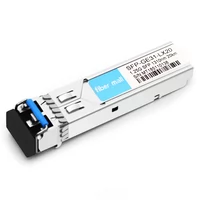 MikroTik S-31DLC20D Compatible 1000Base LX SFP 1310nm 20km LC SMF DDM Transceiver Module
$5.00
MikroTik S-31DLC20D Compatible 1000Base LX SFP 1310nm 20km LC SMF DDM Transceiver Module
$5.00
-
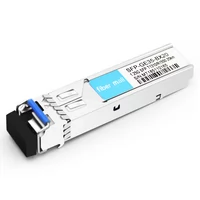 MikroTik S-3553LC20D-1310 Compatible 1000Base BX BIDI SFP TX1310nm/RX1550nm 20km LC SMF DDM Transceiver Module
$6.00
MikroTik S-3553LC20D-1310 Compatible 1000Base BX BIDI SFP TX1310nm/RX1550nm 20km LC SMF DDM Transceiver Module
$6.00
-
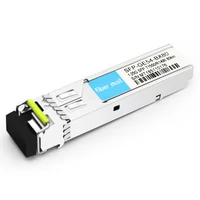 MikroTik S-4554LC80D-1490 Compatible 1000Base BX BIDI SFP TX1490nm/RX1550nm 80km LC SMF DDM Transceiver Module
$30.00
MikroTik S-4554LC80D-1490 Compatible 1000Base BX BIDI SFP TX1490nm/RX1550nm 80km LC SMF DDM Transceiver Module
$30.00
-
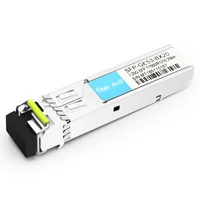 MikroTik S-3553LC20D-1550 Compatible 1000Base BX BIDI SFP TX1550nm/RX1310nm 20km LC SMF DDM Transceiver Module
$9.00
MikroTik S-3553LC20D-1550 Compatible 1000Base BX BIDI SFP TX1550nm/RX1310nm 20km LC SMF DDM Transceiver Module
$9.00
-
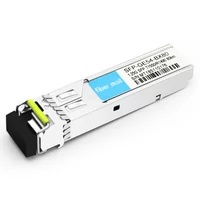 MikroTik S-4554LC80D-1550 Compatible 1000Base BX BIDI SFP TX1550nm/RX1490nm 80km LC SMF DDM Transceiver Module
$30.00
MikroTik S-4554LC80D-1550 Compatible 1000Base BX BIDI SFP TX1550nm/RX1490nm 80km LC SMF DDM Transceiver Module
$30.00
-
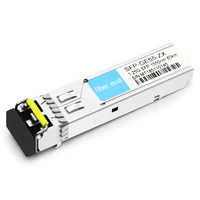 MikroTik S-55DLC80D Compatible 1000Base SFP ZX 1550nm 80km LC SMF DDM Transceiver Module
$18.00
MikroTik S-55DLC80D Compatible 1000Base SFP ZX 1550nm 80km LC SMF DDM Transceiver Module
$18.00
-
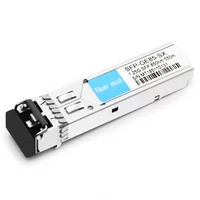 MikroTik S-85DLC05D Compatible 1000Base SFP SX 850nm 550m LC MMF DDM Transceiver Module
$5.00
MikroTik S-85DLC05D Compatible 1000Base SFP SX 850nm 550m LC MMF DDM Transceiver Module
$5.00
-
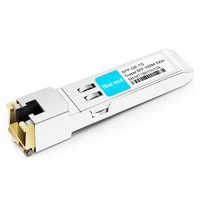 MikroTik S-RJ01 Compatible 10/100/1000M T Copper SFP 100m RJ45 Transceiver Module
$15.00
MikroTik S-RJ01 Compatible 10/100/1000M T Copper SFP 100m RJ45 Transceiver Module
$15.00
